 Music
Music  Music
Music  History
History 10 Less Than Jolly Events That Occurred on December 25
 Weird Stuff
Weird Stuff 10 Funny Ways That Researchers Overthink Christmas
 Politics
Politics 10 Political Scandals That Sent Crowds Into the Streets
 Weird Stuff
Weird Stuff Ten Bizarre Facts About The Doge Meme
 Our World
Our World 10 Ways Your Christmas Tree Is More Lit Than You Think
 Movies and TV
Movies and TV The 10 Coolest Stars to Set Sail on The Love Boat
 History
History 10 Things You Didn’t Know About the American National Anthem
 Technology
Technology Top 10 Everyday Tech Buzzwords That Hide a Darker Past
 Humans
Humans 10 Everyday Human Behaviors That Are Actually Survival Instincts
 Music
Music 10 Surprising Origin Stories of Your Favorite Holiday Songs
 History
History 10 Less Than Jolly Events That Occurred on December 25
 Weird Stuff
Weird Stuff 10 Funny Ways That Researchers Overthink Christmas
Who's Behind Listverse?

Jamie Frater
Head Editor
Jamie founded Listverse due to an insatiable desire to share fascinating, obscure, and bizarre facts. He has been a guest speaker on numerous national radio and television stations and is a five time published author.
More About Us Politics
Politics 10 Political Scandals That Sent Crowds Into the Streets
 Weird Stuff
Weird Stuff Ten Bizarre Facts About The Doge Meme
 Our World
Our World 10 Ways Your Christmas Tree Is More Lit Than You Think
 Movies and TV
Movies and TV The 10 Coolest Stars to Set Sail on The Love Boat
 History
History 10 Things You Didn’t Know About the American National Anthem
 Technology
Technology Top 10 Everyday Tech Buzzwords That Hide a Darker Past
 Humans
Humans 10 Everyday Human Behaviors That Are Actually Survival Instincts
10 Terrible Famines in History
Famine is often considered one of the worst natural disasters on Earth. Its effects are widespread, and the damage caused by a famine can last for months, if not years. Oftentimes caused by other natural disasters, it can destroy whole villages and cause a mass exodus. Death by starvation and malnutrition is slow and painful and often hits the youngest and the elderly the hardest. Unfortunately, at times it is brought upon by political incompetency, and cruelty towards others can exacerbate the situation. Below are 10 terrible famines experienced throughout human history.
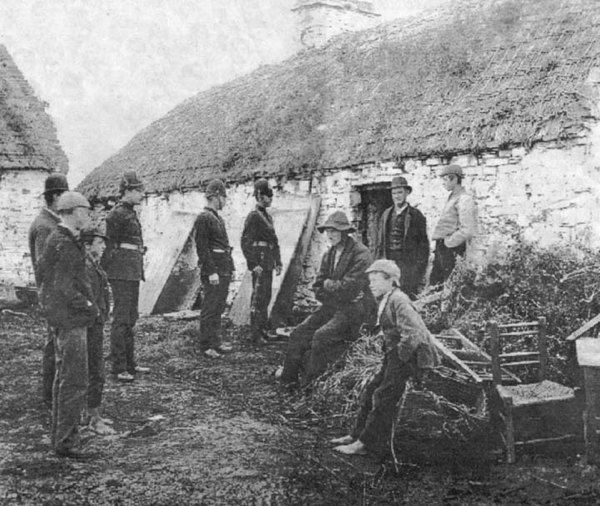
One of the most famous famines in history, the Great Famine, was caused by a devastating potato disease. 33% of the Irish population relied on the potato for sustenance, and the onset of the disease in 1845 triggered mass starvation that lasted until 1853. The large Catholic population was suppressed by British rule and left unable to own or lease land or hold a profession. When the blight struck, British ships prevented other nations from delivering food aid. Ireland experienced a mass exodus, with upwards of 2 million people fleeing the country, many to the United States. At its conclusion in 1853, 1.5 million Irish were dead, and an additional 2 million had emigrated. In total, the population of Ireland shrunk by a resounding 25%.
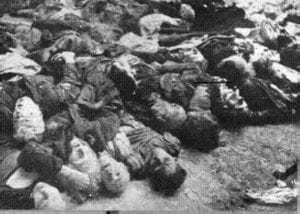
World War I brought a period of famine and sickness throughout much of Persia, then ruled by the Qajar dynasty. One of the leading factors in this famine was the successive years of severe droughts, which significantly reduced farming outputs. Additionally, what food was produced was confiscated by occupying forces. Changes to trade and general unrest during the war heightened fears and created hoarding situations, further exacerbating the situation. This, in conjunction with poor harvests and war profiteering, combined to form a famine that spread quickly throughout the area. Death toll numbers are widely debated, but most scholars estimate around 2 million lost their lives due to famine or resulting diseases.
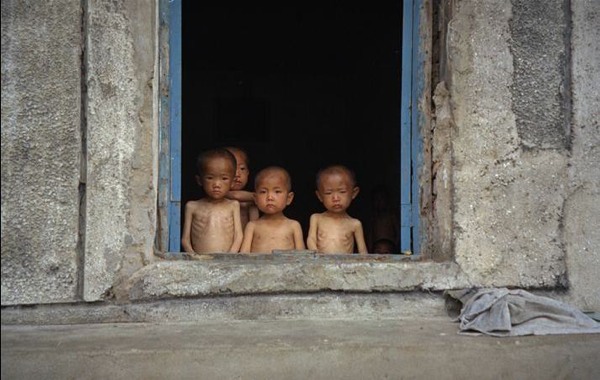
As the most recent famine on this list, North Korea suffered a tremendous famine from 1994 to 1998, brought about by a combination of misguided leadership and large-scale flooding. Torrential rains in 1995 flooded the farming regions and destroyed 1.5 million tons of grain reserves. Politically, Kim Jung Il implemented a “Military First” policy, which placed the needs of the military above the needs of the common people, food rations included. The isolated nation suffered from a stagnating economy and was unable and unwilling to import food. As such, the childhood mortality rate rose to 93 out of 1000 children, and the mortality rate of pregnant women rose to 41 out of 1000 mothers. Over a 4-year span, an estimated 2.5-3 million people perished due to malnutrition and starvation.
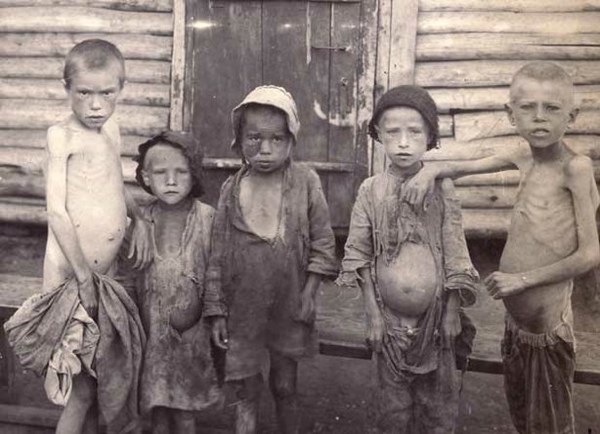
The early 20th century was a tumultuous time for Russians, as they lost millions in World War I, experienced a violent revolution in 1917, and suffered from multiple Civil Wars. The Bolshevik soldiers often forced peasants to sacrifice their food throughout the wars, with little in return. As such, many peasants stopped growing crops, as they could not eat what they sowed. This resulted in a massive shortage of food and seed. Many peasants had taken to eating seeds, as they knew they could not eat any crops they grew. By 1921, 5 million Russians had perished.
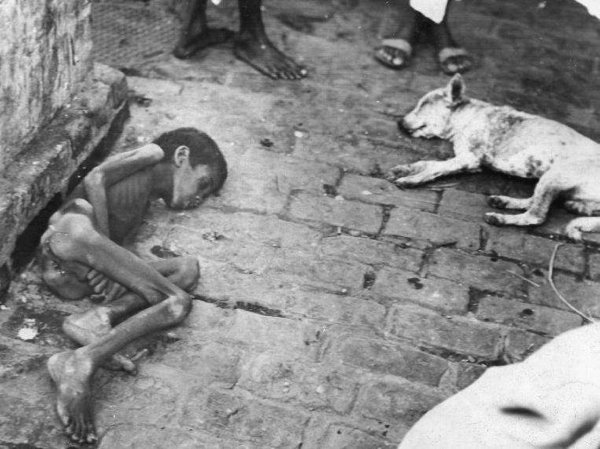
A whirlwind of catastrophic events set about the Bengal Famine of 1943. With World War II raging and Japanese imperialism growing, Bengal lost its largest trading partner in Burma. A majority of the food the Bengalis consumed was imported from Burma, but the Japanese suspended the trade. In 1942, Bengal was hit by a cyclone and three separate tidal waves. The ensuing floods destroyed 3200 square miles of viable farmland. An unpredictable fungus, destroying 90% of all rice crops in the region, then struck crops. Meanwhile, refugees fleeing the Japanese from Burma entered the region by the millions, increasing the need for food supplies. By December of 1943, 7 million Bengalis and Burmese refugees were dead due to starvation.
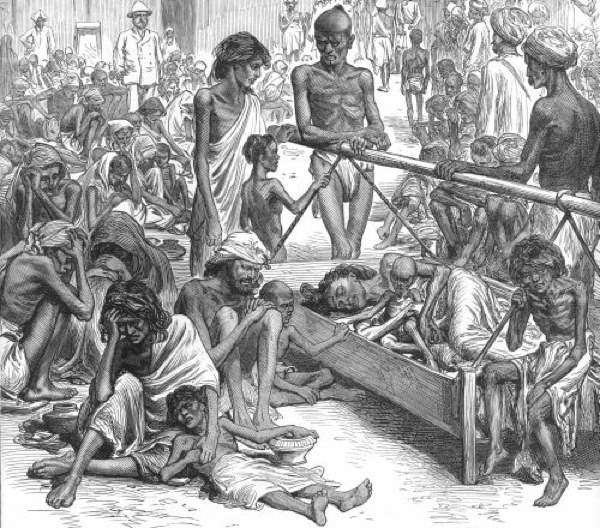
Yet another famine in Bengal, this horrific event killed a third of the population. Largely ruled by the English-owned East India Company, reports of severe drought and crop shortages were ignored, and the company continued to increase taxes on the region. Farmers were unable to grow crops, and any food that could be purchased was too expensive for the starving Bengalis. The company also forced farmers to grow indigo and opium, as they were much more profitable than inexpensive rice. Without large rice stocks, people were left with no food reserves, and the ensuing famine killed 10 million Bengalis.

Incredibly, the severity of this famine was not fully known in the West until the collapse of the USSR in the 1990s. The main cause was the policy of collectivization administered by Josef Stalin. Under collectivization, large swaths of land would be converted into collective farms, all maintained by peasants. Stalin implemented this by destroying the peasants’ existing farms, crops, and livestock and forcibly taking their land. Reports of peasants hiding crops for individual consumption led to wide-scale search parties, and any hidden crops found were destroyed. In actuality, many of these crops were simply seeds that would be planted shortly. The destruction of these seeds and the forced collectivization of land caused mass starvation, killing an estimated 10 million people.
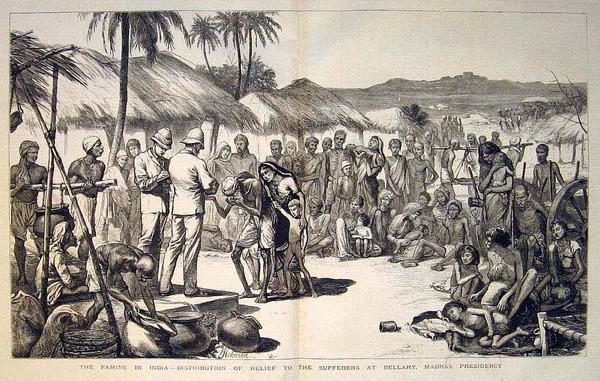
The Chalisa famine refers to the year in the Vikram Samvat calendar used in Northern India. Occurring in 1783, the region suffered from an unusually dry year, as a shift in the El Nino weather system brought significantly less rain to the region. Vast swaths of crops withered and died, and livestock perished due to lack of food and drinking water. The tumultuous year killed 11 million Indians.
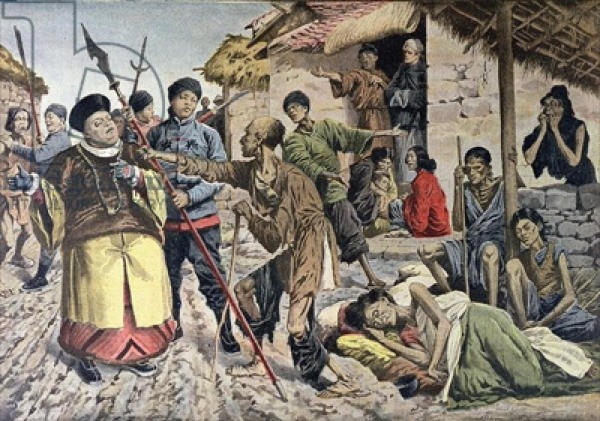
Ranking second in terms of the death toll, the Chinese Famine of 1907 was a short-lived event that took the lives of nearly 25 million people. East-Central China was reeling from a series of poor harvests when a massive storm flooded 40,000 square miles of lush agricultural territory, destroying 100% of the crops in the region. Food riots took place daily and were often quelled through the use of deadly force. It is estimated that, on a good day, only 5,000 were dying due to starvation. Unfortunately for the Chinese, this would not be their last great famine.
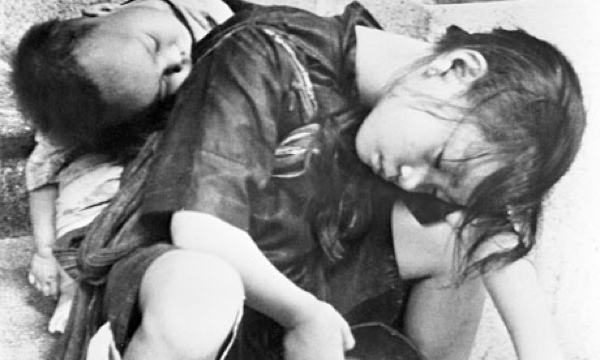
Much like the Soviet Famine of 1932-1933, the Great Chinese Famine was caused by Communist leaders attempting to force change upon an unwilling population. As part of their “Great Leap Forward,” owning private land was outlawed in China in 1958. Communal farming was implemented in an attempt to increase crop production. More relevant, however, was the importance the Communist Regime placed on iron and steel production. Millions of agricultural workers were forcibly removed from their fields and sent to factories to create metal.
In addition to these fatal errors, Chinese officials mandated new methods of planting. Seeds were to be planted 3-5 feet under the soil, extremely close together, to maximize growth and efficiency. In practice, what little seeds that sprouted were severely stunted in growth due to overcrowding. These failed policies, teamed with a flood in 1959 and a drought in 1960, affected the entirety of the Chinese nation. By the time the Great Leap Forward had ended in 1962, 43 million Chinese had died from the famine.








